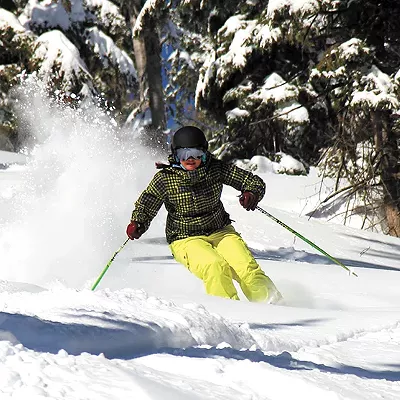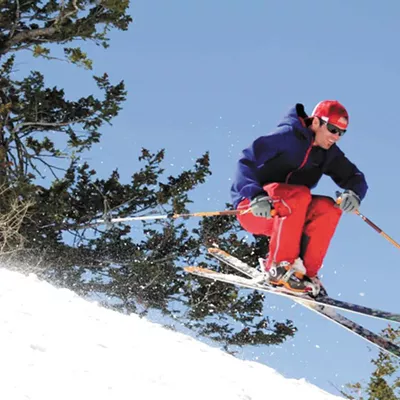
On a recent snowy trek in the Colville National Forest with friends, Kurt Perrigo packed only a knife, water bottle, flint and steel and some food.
"I brought what I could stick in my pockets," Perrigo says.
A sales associate at REI, Perrigo teaches a winter camping class and has been going on outdoor excursions since he was a kid. He tells people who are planning winter trips to bring what you need based on your skill set and prepare to spend the night even if you're only taking a day hike.
To keep your body heat up, wear synthetic or wool clothing instead of cotton, which holds onto moisture, says Perrigo. Avoid overheating and sweating by dressing in layers you can shed. Snack throughout the day — especially before sleeping — on foods high in calories and protein.
"Calories and fat. That's what you need, because that's what your body's going to burn to generate that heat," he says.
As for staying hydrated, just check the ground. "An ideal thing about winter camping is the fact that you don't have to worry about water sources as long as there's snow out there," Perrigo says.
But don't melt snow in your mouth (it dries you out) or put it in a hot pan over a stove (you can scorch the snow). Instead, Perrigo says to melt a mixture of snow and water slowly over fire or fill a bag with snow and melt it close to your body.
If you plan to camp out or find yourself in a survival situation, you'll need shelter from the elements. Travis Johnson, founder of Northwest Survival School and a specialist in cold weather survival, says to build a fire first; that way you have warmth in case you lose light before your shelter is completed. And you'll be able to cook food while you build. Always bring a guaranteed way to start fire, like a flint stick, waterproof matches or cotton balls with petroleum jelly.
"Fire is a tool of its own," Johnson says. "It's the tool of all tools."
For shelter, you can bring a tent or use natural resources. If there's enough snow, dig a snow cave, carving a place to sleep higher than the doorway, so you stay warmer, and poking a hole in the roof for ventilation, Perrigo says. Or erect a debris hut, using materials on the ground and propping them against downed trees. Be sure to sleep on top of a mat or branches to insulate your body from the cold ground.
Another thing to keep in mind: avalanche safety. If you're at high altitude, stay aware of your surroundings and use a ski pole to test for frozen layers under the snow, Johnson says. Icy snow layers on an incline could mean danger, and you should move out of clearings and closer to tree lines.
You can avoid emergencies when venturing into the frozen wilderness by going out armed with the right skills and by telling someone where you're going and when you will return. It doesn't have to be a miserable, cold and wet experience, Perrigo says. If you're prepared for it, you can take in the beauty.
"Just that winter landscape, that hush and quiet of it is really nice," he says. ♦
















